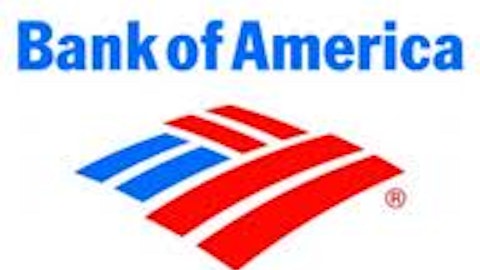At the moment, banks may be one of the best opportunities for investors. During the post-crisis period, banks have delivered the worst worldwide shareholder returns out of all industries. Though many banks are back on track, their prices are still depressed due to shattered investor confidence. This undervaluation could provide investors with a great opportunity to earn a higher return as the banking sector revives.
Regulatory reforms
Banks are highly sensitive to regulatory risk, as new regulations can bring along material costs.
The Federal Reserve (Fed) has been reconsidering key capital adequacy requirements since the financial crisis hit the U.S. Weaknesses became obvious in the recession, leading many to file for bankruptcy. On July 2, Federal Reserve Board approved new regulatory reforms that help in enabling banks to maintain a strong capital base. This will better equip financial institutions to continue lending to creditworthy households and businesses even after absorbing unforeseen losses and during recessions.
My report focuses on analyzing the implications of these changes in key capital rules for banks. I applied a P/E stock screen and chose three undervalued banks: U.S. Bancorp (NYSE:USB), Citigroup Inc. (NYSE:C), First Republic Bank (NYSE:FRC) and one overvalued bank; Bank of America Corp (NYSE:BAC), for my analysis.
Change in capital requirements: is it a wake-up call for banks?
As a result of the revised regulatory framework, U.S. banks will now hold an increased amount of capital. Although many banks are in compliance with the new rules, the Fed anticipates that approximately 100 banks will have to raise $4.5 billion by FY19 to meet the set of laws.
Tier 1 Capital
The statute raised the bar of minimum ratio requirement of tier 1 capital to risk-weighted assets from 4% to 6%.

Source: Company Financials, Form 10-K
All four banks are expected to remain unaffected by the new tier 1 capital requirements as they had sufficiently higher capital cushions. Citigroup Inc. (NYSE:C) and First Republic Bank (NYSE:FRC) have the highest buffer of tier 1 capital at 14.06% and 13.27%, respectively.
However, the total capital requirement against risk-weighted assets remains unchanged at 8%, as stated under the present Basel III framework.
Common equity tier 1
To be inline with the international Basel framework, the rule included a new fundamental minimum ratio of common equity tier 1 capital to risk-weighted assets of 4.5%. Considering the quality aspect, common equity tier 1 capital is the most loss-absorbing form of capital. Thus, the higher it is, the more financially strong a bank is.
Though for now, all banks have a strong footing in this area, with Citigroup reporting the highest ratio at 12.67%. U.S. Bancorp (NYSE:USB) had the lowest ratio at 8.1%. Bancorp’s net interest margin declined to 3.58% in FY12 compared to 3.65% in FY11. If the trend continues, the capital level may fall below the minimum requirement. In that case, Bancorp should rebuild it through raising private capital in the market or reduce discretionary distributions of earnings — i.e., reduce dividend payments, share repurchases and staff bonus payments. The distribution constraints imposed on banks increase as the banks’ capital levels approach the minimum requirements.
Leverage ratio
The regulatory framework also incorporates a minimum leverage ratio of 4% for all banking institutions. Leverage in banking is the ratio of lending to equity. First Republic Bank (NYSE:FRC) had the highest leverage ratio reported in FY12 at 9.32%, followed by Bancorp at 9.2%.
Besides, the statute now also requires the reporting of new minimum supplementary leverage ratio that considers off-balance sheet risk exposures, specifically for large internationally active banks. During 2007-08, many banks were lending out more and more funds without raising any extra. They were able to escape the regulatory system by using off balance sheet vehicles. Thus, the new rules specifically focus on addressing this issue.
Bank of America Corp (NYSE:BAC) and Citigroup are likely to fall under this category of large internationally active banks. Citigroup reported its leverage ratio to be 7.48% in 2012. Though its net income was down in FY12 by 32% compared to FY11, Citigroup is taking steps to increase its business in profitable areas. Citigroup plans to open offices in Iraq to gain from the $1 trillion infrastructure spending there. Recently, Citigroup also bid to fund and Iraq to Jordan oil pipeline.
Bank of America has recently been directed to confront a Texas property fees suit relating to the fees it attempted to evade by using MERS to track property transactions.
Conclusion
Based on my analysis, I would recommend buying First Republic Bank (NYSE:FRC) as it is currently undervalued compared to the industry. Also, the bank’s business is flourishing day by day and it continues to expand its network of operations. The bank’s strengths can be seen in several areas, such as its lowest efficiency ratio at 52%, expanding profit margins, 39.11% price return in the past one year, falling non-performing loans — below 1%, growth in earnings per share and compelling growth in ROE of 13.54% in FY12.
Bank of America should be sold due to its continuously rising NPLs, weak ROE of 1.27% owing to the drastic decline in its interest and non-interest income and its high efficiency ratio of 85.59%. The recent lawsuit is also cause for concern.
usman iftikhar has no position in any stocks mentioned. The Motley Fool recommends Bank of America. The Motley Fool owns shares of Bank of America and Citigroup Inc (NYSE:C) .
The article First Republic Bank: The Rising Star in the Banking Industry originally appeared on Fool.com and is written by usman iftikhar.
usman is a member of The Motley Fool Blog Network — entries represent the personal opinion of the blogger and are not formally edited.
Copyright © 1995 – 2013 The Motley Fool, LLC. All rights reserved. The Motley Fool has a disclosure policy.



